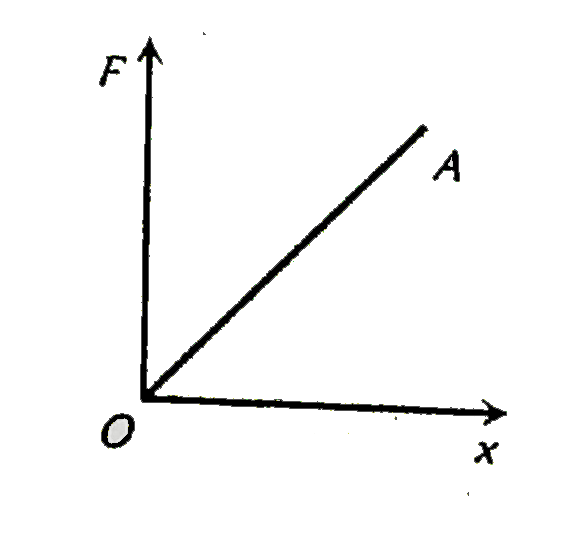
The force required to stretch a spring varies with the distance a shown in the figure. If the experiment is performed with the above spring of half length, the line OA will
shift towards F-axis
shift towards X-axis
remain as it is
become double in length
The correct Answer is:A
(a) K=Fx=slope of F-x graph.
K∝1l
Length is reduced to half. Therefore, K will become two times. Slope will increase.
Topper's Solved these Questions
- BOOK - DC PANDEYCHAPTER - WORK, ENERGY AND POWEREXERCISE - MEDICAL ENTRANCE SPECIAL QUESTIONS16videos
WORK, ENERGY AND POWER
- BOOK - DC PANDEYCHAPTER - WORK, ENERGY AND POWEREXERCISE - MATCH THE COLUMNS7videos
WORK, ENERGY AND POWER
- BOOK - DC PANDEYCHAPTER - WORK, ENERGY AND POWEREXERCISE - CHECK POINT 6.310videos
WORK, ENERGY AND POWER
- BOOK - DC PANDEYCHAPTER - WORK, ENERGY & POWEREXERCISE - Level 2 Comprehension Based2videos
WORK, ENERGY & POWER
- BOOK - DC PANDEYCHAPTER - WORK, POWER AND ENERGYEXERCISE - E Integer Type Questions11videos
WORK, POWER AND ENERGY
Similar Questions
Knowledge Check
- Question 1 - Select One
The force required to stretch a spring varies with the distance as shown in figure. If the experiment is performed with the above spring of half the length, the line OA will
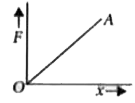 Ashift towards F-axisBshift towards X-axisCremains as it isDbecome double in length.
Ashift towards F-axisBshift towards X-axisCremains as it isDbecome double in length. - Question 2 - Select One
In the equilibrium conditions shown in the figure all the springs have unstretched length l
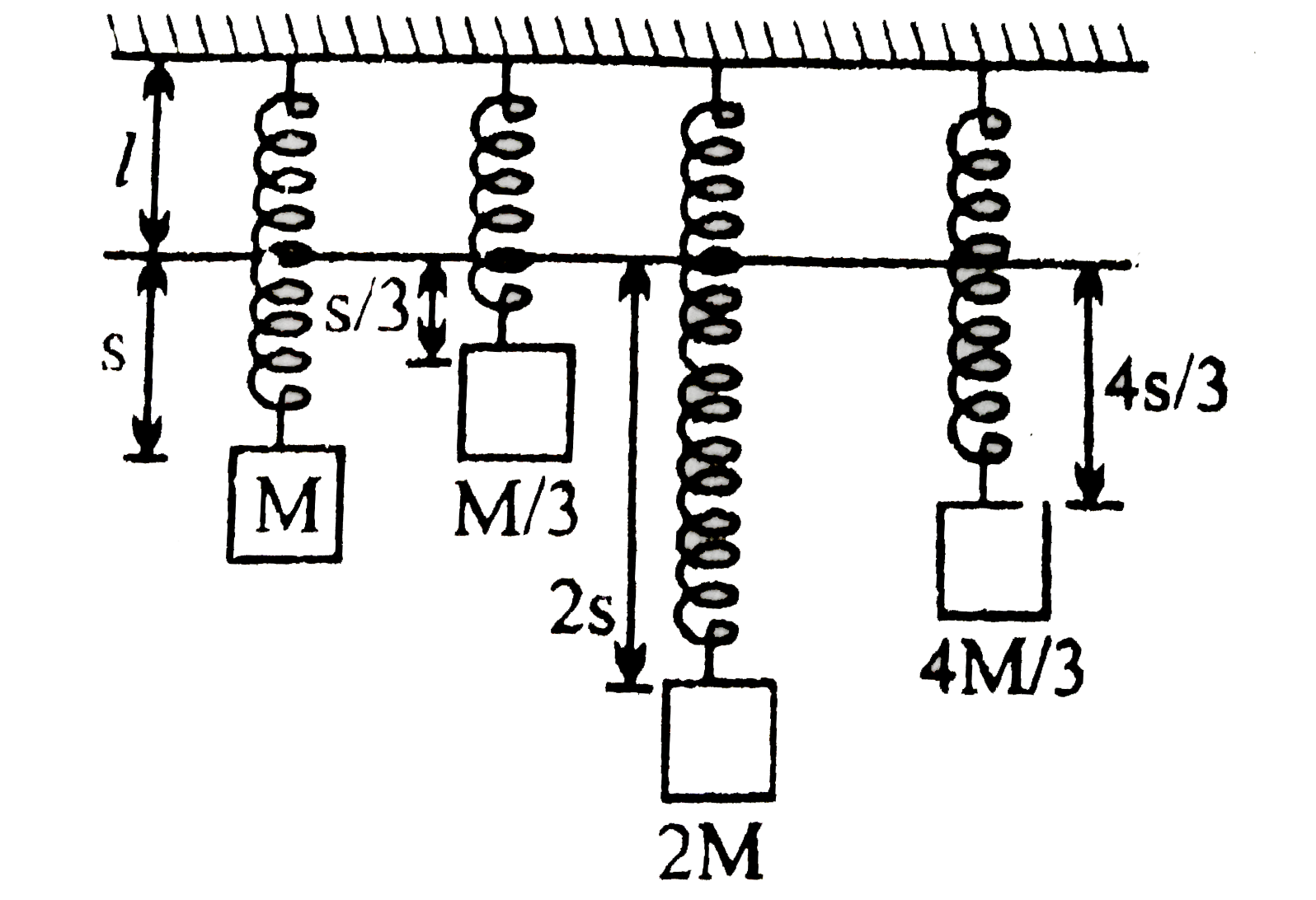 Aspring constant of all the spring is sameBspring constant of third spring is maximumCspring force is minimum in second springDspring constant is maximum in fourth spring
Aspring constant of all the spring is sameBspring constant of third spring is maximumCspring force is minimum in second springDspring constant is maximum in fourth spring - Question 3 - Select One
The frequency of oscillation of the spring shown in the figure will be
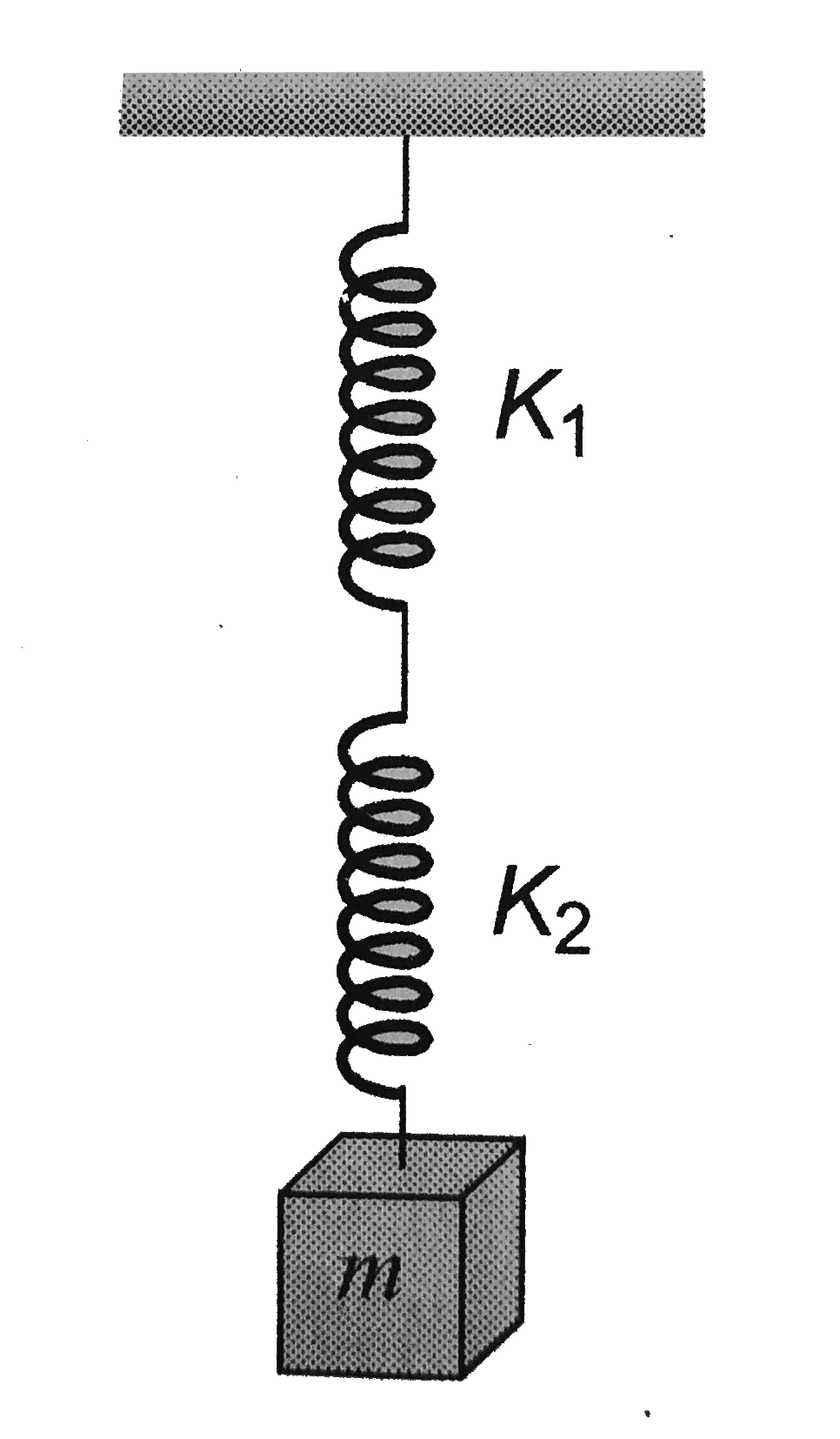 A12π√KmB12π√(K1+K2)mK1K2C2π√KmD12π ⎷(K1K2m(K1+K2))
A12π√KmB12π√(K1+K2)mK1K2C2π√KmD12π ⎷(K1K2m(K1+K2))
20 J work is required to stretch a spring through 0.1 m . Find the force constant of the spring. If the spring is further stretched through 0.1 m. Calculate work done.
View SolutionA force of 1N is required to stretch a spring by 1.5cm. If the spring is cut into three equal parts, find the force required to stretch one part by 3 cm.
View SolutionWhat is the spring constant for the combination of shown shown in figure ?
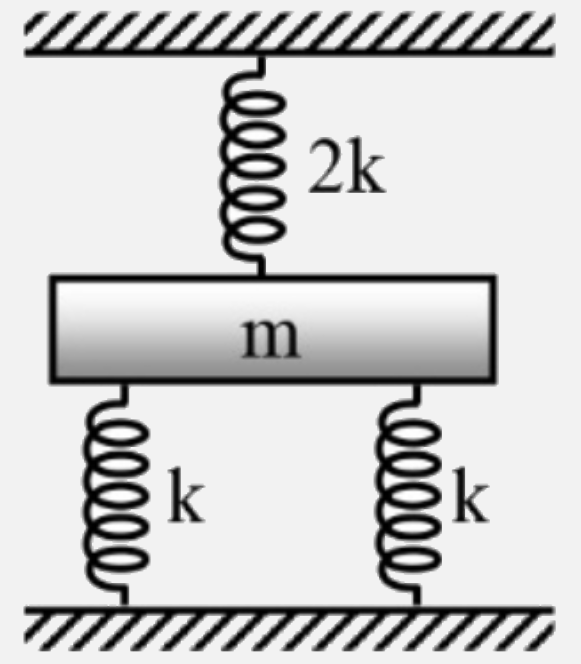 View Solution
View SolutionThe frequency of oscillation of the springs shown in the figure will be
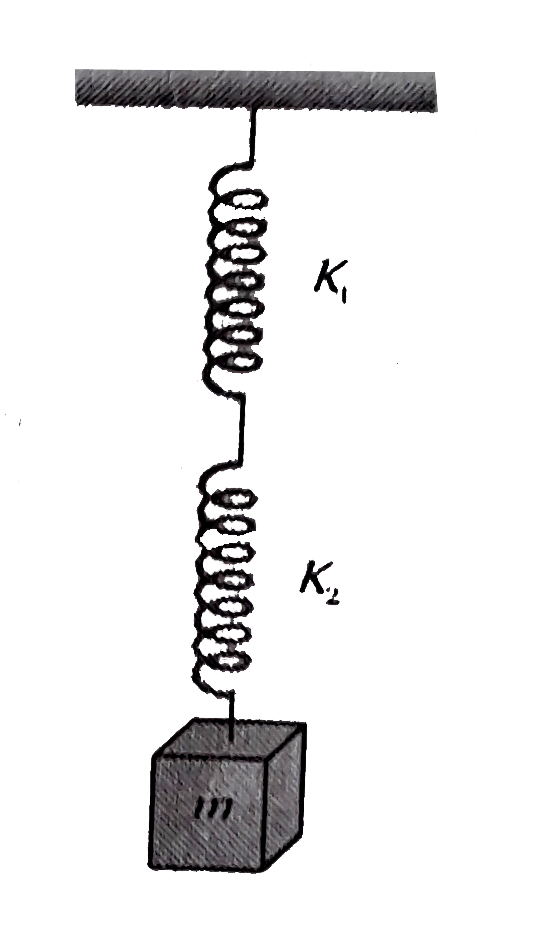 View Solution
View SolutionA block of mass m slips down an inclined plane as shown in the figure. When it reaches the bottom it presses the spring by a length (spring length ⟨h and spring constant = K)-
 View Solution
View Solution



